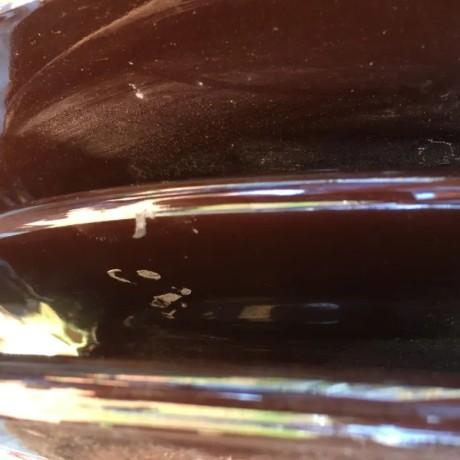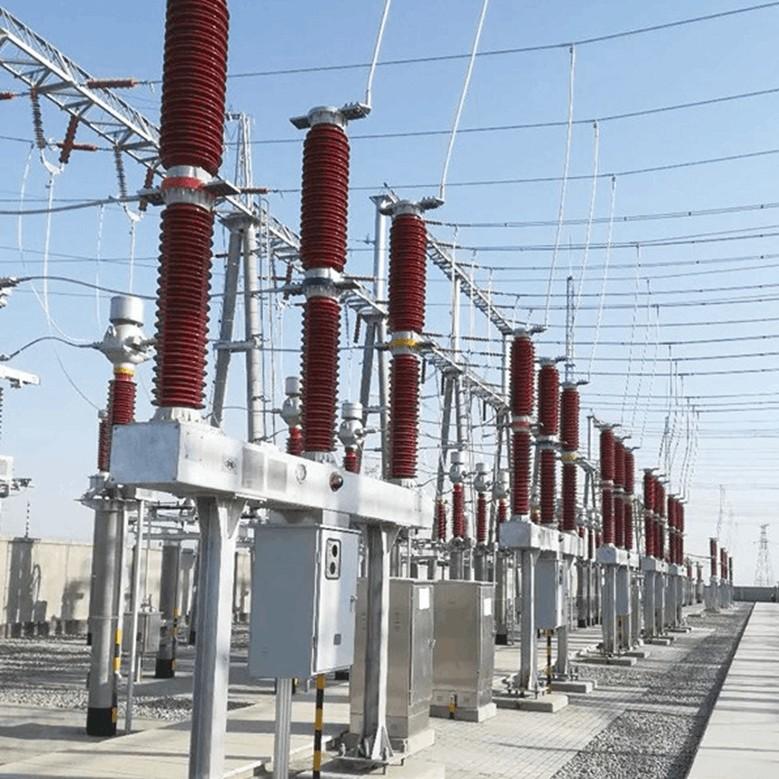Paano Pumili at I-set ang Circuit Breakers
1. Uri ng Circuit Breakers
1.1 Air Circuit Breaker (ACB)
Tinatawag din itong molded frame o universal circuit breaker, kung saan lahat ng komponente ay nakalakip sa isang insuladong metal na frame. Karaniwan ito ay open-type, na nagbibigay-daan sa madaling pagpalit ng mga contact at bahagi, at maaaring ma-equipped ng iba't ibang accessories. Ang ACBs ay karaniwang ginagamit bilang pangunahing switch para sa power supply. Ang overcurrent trip units ay kasama ang electromagnetic, electronic, at intelligent types. Nagbibigay sila ng apat na yugto ng proteksyon: long-time delay, short-time delay, instantaneous, at ground fault, kung saan bawat setting ng proteksyon ay maaaring i-adjust sa loob ng range batay sa laki ng frame.
Ang ACBs ay angkop para sa AC 50Hz networks na may rated voltages ng 380V o 660V at rated currents mula 200A hanggang 6300A. Ginagamit sila pangunahin para sa power distribution at proteksyon laban sa overloads, undervoltage, short circuits, at single-phase grounding. Ang mga breakers na ito ay nagbibigay ng maraming intelligent protection functions at selective protection. Sa normal na kondisyon, maaari silang gamitin para sa infrequent circuit switching. Ang ACBs na may rating hanggang 1250A ay maaari ring magprotekta ng motors mula sa overload at short circuits sa 380V/50Hz systems.
Ang karaniwang aplikasyon nito ay kinabibilangan ng main outgoing switches sa 400V side ng transformers, bus tie switches, high-capacity feeder switches, at large motor control switches.
1.2 Molded Case Circuit Breaker (MCCB)
Tinatawag din itong plug-in circuit breaker, kung saan ang mga terminal, arc extinguishers, trip units, at operating mechanism ay naka-house sa isang plastic enclosure. Ang auxiliary contacts, undervoltage trip units, at shunt trip units ay kadalasang modular, na nagreresulta sa compact design. Ang MCCBs ay hindi karaniwang disenyo para sa repair at kadalasang ginagamit bilang branch circuit protection.
Ang karamihan sa MCCBs ay kasama ang thermal-magnetic trip units. Ang mas malalaking modelo ay maaaring may solid-state trip sensors. Ang overcurrent trip units ay maaaring electromagnetic o electronic. Ang electromagnetic MCCBs ay karaniwang non-selective, na nagbibigay lamang ng long-time at instantaneous protection. Ang electronic MCCBs ay nagbibigay ng apat na function ng proteksyon: long-time, short-time, instantaneous, at ground fault. Ang ilang bagong modelo ay kasama ang zone-selective interlocking.
Ang MCCBs ay karaniwang ginagamit para sa feeder circuit control at proteksyon, main outgoing switches sa small distribution transformers, motor control terminals, at bilang power switches para sa iba't ibang machinery.
1.3 Miniature Circuit Breaker (MCB)
Ang MCBs ang pinakakaraniwang ginagamit na terminal protection devices sa building electrical systems. Sila ay nagprotekta ng single-phase at three-phase circuits hanggang 125A laban sa short circuits, overloads, at overvoltage. Available sa 1P, 2P, 3P, at 4P configurations.
Isang MCB ay binubuo ng operating mechanism, contacts, protective devices (iba't ibang trip units), at arc extinguishing system. Ang contacts ay isinasara manually o electrically at inilalagay sa lugar ng free-tripping mechanism. Ang coil ng overcurrent trip unit at ang heating element ng thermal trip unit ay konektado sa series sa main circuit, habang ang undervoltage trip coil ay konektado sa parallel sa power supply.
Sa building electrical design, ang MCBs ay ginagamit para sa overload, short-circuit, overcurrent, undervoltage, ground fault, leakage protection, automatic transfer ng dual power sources, at infrequent motor starting at proteksyon.
2. Key Technical Parameters ng Circuit Breakers
Rated Operating Voltage (Ue)
Ang nominal voltage kung saan ang circuit breaker ay disenyo para tumrabaho patuloy sa tiyak na kondisyon. Sa Tsina, para sa mga sistema hanggang 220kV, ang maximum operating voltage ay 1.15 times ang system rated voltage; para sa 330kV at pataas, ito ay 1.1 times. Ang breaker ay dapat panatilihin ang insulation at gumawa ng switching operations sa maximum operating voltage ng sistema.
Rated Current (In)
Ang current na ang trip unit ay maaaring dalhin patuloy sa ambient temperatures hanggang 40°C. Para sa adjustable trip units, ito ang maximum adjustable current. Sa temperature na higit pa sa 40°C (hanggang 60°C), pinapayagan ang derating.
Overload Trip Current Setting (Ir)
Ang breaker trips na may time delay kapag ang current ay lumampas sa Ir, na kumakatawan sa maximum current na ang breaker ay maaaring dalhin nang walang tripping. Ang Ir ay dapat mas malaki kaysa sa maximum load current (Ib) ngunit mas maliit kaysa sa cable’s permissible current (Iz). Para sa thermal-magnetic breakers, ang Ir ay karaniwang adjustable mula 0.7 hanggang 1.0In; ang electronic trip units ay nagbibigay ng mas malawak na range, karaniwang 0.4 hanggang 1.0In. Para sa fixed trip units, Ir = In.
Short-Circuit Trip Current Setting (Im)
Ang threshold kung saan ang instantaneous o short-time trip unit ay aktibo upang mabilis na putulin ang circuit sa high fault currents.
Rated Short-Time Withstand Current (Icw)
Ang current na ang breaker ay maaaring tahanin sa tiyak na duration nang walang thermal damage.
Breaking Capacity
Ang maximum fault current na ang breaker ay maaaring ligtas na putulin, independent ng rated current. Common values include 36kA at 50kA. Ito ay kategorya sa ultimate breaking capacity (Icu) at service breaking capacity (Ics).
3. General Principles para sa Circuit Breaker Selection
Rated operating voltage ≥ circuit rated voltage.
Rated short-circuit making/breaking capacity ≥ calculated load current.
Rated short-circuit making/breaking capacity ≥ maximum possible short-circuit current sa circuit.
Single-phase-to-ground short-circuit current sa circuit end ≥ 1.25 × instantaneous (o short-time) trip setting.
Undervoltage trip unit rated voltage = circuit rated voltage.
Shunt trip unit rated voltage = control power supply voltage.
Electric operating mechanism rated voltage = control power supply voltage.
Para sa lighting circuits, set instantaneous electromagnetic trip current sa 6 times ang load current.
Para sa single motor short-circuit protection: 1.35× motor starting current (DW series) o 1.7× (DZ series).
Para sa multiple motors: 1.3× largest motor starting current + sum ng other motors’ running currents.
As main transformer low-voltage side switch: breaking capacity > transformer’s low-voltage short-circuit current; trip rated current ≥ transformer rated current; short-circuit setting = 6–10× transformer rated current; overload setting = transformer rated current.
After preliminary selection, coordinate with upstream at downstream breakers upang maiwasan ang cascading trips at minimize outage scope.
4. Selectivity ng Circuit Breakers
Ang circuit breakers ay klasipikado bilang selective o non-selective. Ang selective breakers ay nagbibigay ng two- o three-stage protection: instantaneous at short-time para sa short circuits, long-time para sa overload. Ang non-selective breakers ay karaniwang instantaneous (short-circuit lang) o long-time (overload lang). Ang selectivity ay nakuha gamit ang short-time delay trip units na may iba't ibang time settings. Key considerations:
Upstream instantaneous trip setting ≥ 1.1 × maximum 3-phase short-circuit current sa downstream breaker’s output.
Kung downstream ay non-selective, upstream short-time trip setting ≥ 1.2 × downstream instantaneous trip setting upang panatilihin ang selectivity.
Kung downstream ay din selective, upstream short-time delay time ≥ downstream short-time delay time + 0.1s.
Generally, Iop.1 ≥ 1.2 × Iop.2.
5. Cascading Protection
Sa system design, ang coordination sa pagitan ng upstream at downstream breakers ay nagbibigay ng selectivity, speed, at sensitivity. Ang proper coordination ay nagpapahintulot ng selective fault isolation, na nagpapanatili ng power sa healthy circuits. Ang cascading ay gumagamit ng current-limiting effect ng upstream breaker (QF1). Kapag nagkaroon ng short circuit downstream (sa QF2), ang QF1’s current-limiting action ay binabawasan ang actual fault current, na nagpapahintulot sa QF2 na putulin ang current na mas mataas kaysa sa rated capacity nito. Ito ay nagpapahintulot ng paggamit ng mas mura at mas mababang-breaking-capacity downstream breakers. Ang kondisyon ay kasama ang walang critical loads sa adjacent circuits (dahil ang QF1 trip ay mag-blackout sa QF3), at proper matching ng instantaneous settings. Ang cascading data ay nadetermina sa pamamagitan ng testing at ipinagbibigay ng manufacturers.
6. Sensitivity ng Circuit Breakers
Upang matiyak ang reliable operation sa minimum fault conditions, ang sensitivity (Sp) ay dapat ≥1.3 per GB50054-95:
Sp = Ik.min / Iop ≥ 1.3
Kung saan ang Iop ay ang instantaneous o short-time trip setting, at ang Ik.min ay ang minimum short-circuit current sa protected line end sa minimum system operation. Para sa selective breakers na may both short-time at instantaneous trips, ang short-time trip sensitivity lang ang kailangan na i-verify.
7. Selection at Setting ng Trip Units
(1) Instantaneous Overcurrent Trip Setting.Dapat lumampas sa circuit’s peak current (Ipk) sa motor startup:
Iop(0) ≥ Krel × Ipk
(Krel = reliability factor)
(2) Short-Time Overcurrent Trip Setting at Time
Iop(s) ≥ Krel × Ipk. Ang time delays ay karaniwang 0.2s, 0.4s, o 0.6s, na set upang matiyak na ang upstream operation time ay lumampas sa downstream ng one time step.
(3) Long-Time Overcurrent Trip Setting at Time
Nagprotekta laban sa overload: Iop(l) ≥ Krel × I30 (maximum load current). Ang time setting ay dapat lumampas sa allowable short-term overload duration.
(4) Coordination Between Trip Settings at Cable Capacity.Upang maiwasan ang cable overheating o fire nang walang tripping:
Iop ≤ Kol × Ial
Kung saan ang Ial = cable’s allowable current-carrying capacity, Kol = short-term overload factor (4.5 para sa instantaneous/short-time trips; 1.1 para sa long-time trip as short-circuit protection; 1.0 para sa overload protection only). Kung hindi nasatisfy, adjust trip setting o increase cable size.





















